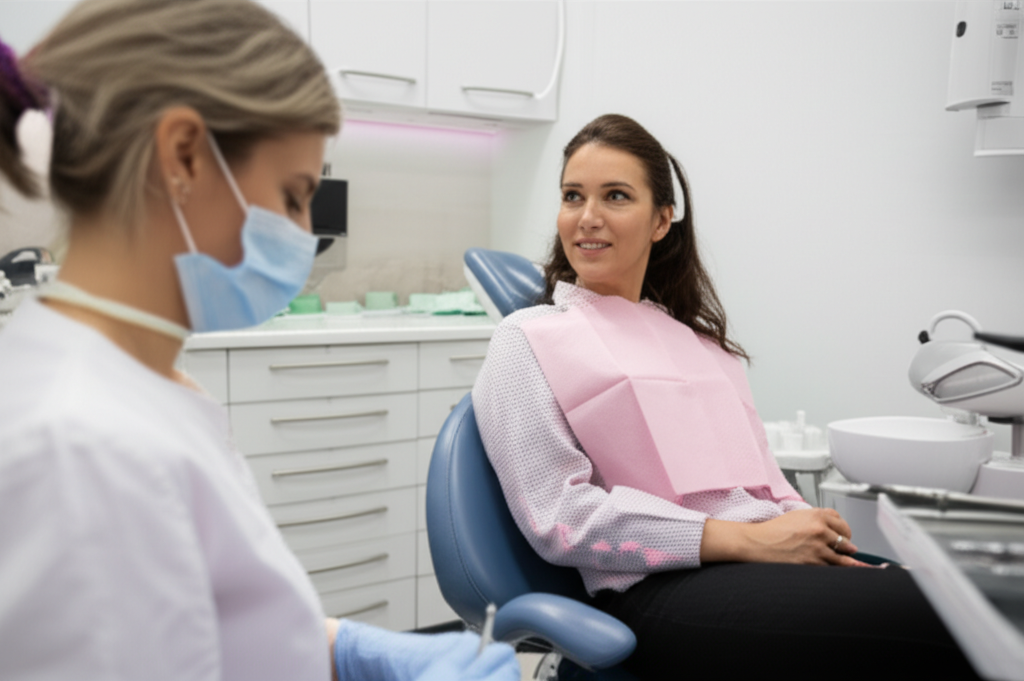
How Long Should You Shadow a Dentist? Maximizing Your Pre-Dental Experience
Imagine this: You’re about to start your dental career. The office is bright, tools shine, and you watch a dentist calmly help a patient. Maybe you’re about to begin shadowing, or you’ve already spent a couple of days watching and now you’re asking, “How long do I really need to shadow a dentist before dental school?” If you’re feeling unsure about getting it just right, you’re not alone. Lots of students wonder the same thing.
Let’s look at everything you need to know, step by step, so you can get the most out of shadowing—whether you want to stand out on applications or just make sure dentistry is for you.
In This Article
- The Value of Shadowing: Why It Matters
- Finding the Sweet Spot: How Many Hours Do You Need?
- Decoding Dental School Requirements
- What Shapes Your Ideal Shadowing Experience?
- Making the Most of Every Hour
- Where and How to Find Shadowing Opportunities
- Your Personal Shadowing Roadmap: Customizing the Journey
- Frequently Asked Questions
The Value of Shadowing: Why It Matters
Let’s start simple: Why do pre-dental students need to shadow dentists?
Lots of people say, “I want to be a dentist because I like science and helping people.” That’s great, but shadowing lets you see much more than that. Think of shadowing as a “behind the scenes” look at dentistry. You get to see real-life challenges, busy days, and even tricky moments that happen in a dental office.
Question: Is it really needed if I already know I want to be a dentist?
Short answer: Yes. Almost all dental schools expect it, and shadowing lets you make sure dentistry is really for you before you spend years studying for it.
Think about it this way: If you’re going to buy a car, would you buy it without ever driving it first? Shadowing is how you “test drive” a dental career.
When dental schools see you’ve spent time shadowing, it shows them you’ve done your research and know what dentistry is really like. They want students who are making smart choices.
Finding the Sweet Spot: How Many Hours Do You Need?
So, here’s the big question: How many hours should you shadow a dentist?
The “Magic Number” Myth
There’s no perfect, official number. But let’s look at what really works.
Usual Hour Ranges
- Minimum: 50 hours—This is the lowest number you should aim for, but just meeting this may not be enough at busy schools.
- Best bet: 100-150 hours—This range shows you’re serious and lets you see lots of different situations.
- Super competitive: 200 hours or more—People going for top programs often do this much, often with lots of different dentists, types of work, or even different places.
But don’t just try to rack up hours. Quality is just as important—often more important—than how many hours you do.
When “Enough” Means Enough
Admissions committees want more than just hours on paper. They look for:
- Did you really watch closely and learn (Did you ask questions? Did you watch carefully?)
- Did you see more than one kind of dentist or office?
- Do you understand what being a dentist is like? (Can you talk about what you saw, what was hard, what surprised you?)
Case in Point:
Let’s say there are two students:
- Alex spent 60 hours at one dentist’s office, just watching regular checkups.
- Jamie did 110 hours at three places—a private dentist, a kids’ dentist, and a community clinic. Jamie asked questions and took notes on everything.
Jamie did more hours, but also saw more and learned more. That matters to people reading your application.
Decoding Dental School Requirements
Maybe you wonder: “Is there a clear rule from every school about shadowing?” That’s a good question, and it can confuse lots of students.
Understanding Admissions Wants
Most dental schools in the U.S. and Canada don’t have a strict requirement for a certain number of shadowing hours. Instead, they use phrases like “a lot of experience,” “strongly advised,” or “shows they care.”
How do you know what each school wants?
- Check each school’s website: Go to the “Admissions Requirements” part.
- Look at AADSAS/ADEA: The American Dental Education Association (ADEA) and AADSAS sometimes post tips, but they can be different for each school.
- Talk to advisors: University career helpers and pre-dental advisors know what schools usually expect.
Keeping Track of Your Hours
Some schools want you to “prove” your hours with dentist names and office details. Keep a spreadsheet or little notebook: dates, times, names, and what you saw. It’s easy to forget later!
What Else Do Schools Want?
They also want to see:
- Time with different types of dentists—like general dentistry, oral surgery, kids’ dentistry, braces, etc.
- Different work places—Private practice, clinics, or colleges.
- Shadowing spread out—They like to see you didn’t just cram all your hours into one week.
Schools may ask about your shadowing at interviews, so be ready to share what you learned.
What Shapes Your Ideal Shadowing Experience?
Shadowing is not exactly the same for everyone. Some things will shape what’s best for you.
1. Your Own Goals
- Still thinking it over? If you’re not sure dentistry is for you, shadow several different places and for more time.
- Already sure? If you know this is for you, more variety and hours will help your application.
2. The Quality of What You Learn
You can learn a lot in just a few days if you really pay attention and ask questions. Are you:
- Writing things down?
- Thinking about how the dentist acts with patients and staff?
- Asking good questions about what you see?
3. See Different Experiences
Try to:
- Shadow a general dentist for everyday work.
- Spend some days with specialists: braces dentist (orthodontist), oral surgeons, gum dentist (periodontist), or kids’ dentist.
- Watch in different places: a busy community clinic, a fancy digital dental office, or a small private practice.
The point? You’ll see what’s possible.
4. Shadow for More Than a Day or Two
If you only do a couple of hours, you’ll just see basic stuff. Sticking around for months lets you see long-term patient relationships, tough cases, and how the work changes over a year—kind of like watching a whole season of a show, not just one episode.
Making the Most of Every Hour
It isn’t just about showing up—make your time count.
Before You Shadow
1. Study Up
- Read a little about the dentist or the kind of work in the office. For example, check out what happens in a crown and bridge lab, or what a dental ceramics lab does for patients. This helps you ask better questions and understand things.
- Get some questions ready: “How do you decide which treatment to use?” or “What’s the hardest part of being a dentist?”
2. Dress and Act Well
- Wear neat, business-type clothes (unless you’re told something else).
- Be on time (even a bit early), smile, and say hi to staff and patients if it’s okay.
During Shadowing
1. Pay Close Attention
- Watch everything: How does the dentist talk to nervous patients? How does the team work together? What happens when there’s a surprise?
- Take notes (write them in a notebook, not on your phone while someone’s in the chair).
2. Ask Questions
- Wait for the right moment (not in the middle of a noisy procedure).
- Ask about more than just tools—try questions about running the office, work hours, dealing with tough patients, and what made the dentist choose this job.
3. Help If You Can
- You usually can’t work on patients, but you might be able to help set up rooms, clean up, or just watch from a better spot.
After Shadowing
1. Say Thank You
- A note, a quick email, or a card is really appreciated.
2. Think About What You Saw
- Write a short note to yourself: What did you like? What surprised or impressed you? What would you do differently?
3. Keep Things Going
- If you had a good connection and the dentist got to know you, maybe ask them for a letter of recommendation later.
- Write down all your shadowing info: dates, times, names, contact details, and what you noticed.
Where and How to Find Shadowing Opportunities
It may take some tries to find places to shadow, but don’t give up.
Ask People You Know
- Ask friends, family, or anyone you know if they can introduce you to a dentist.
- Ask your college’s pre-health advisors—they often know dentists nearby who take students.
Call or Email Offices
- Make a list of local dental offices and send a polite message or call. Say who you are, why you want to shadow, and when you’re available.
Example:
“Hi, my name is [Your Name], and I’m a pre-dental student at [Your University]. I want to learn more about dentistry and was wondering if you let students shadow in your office. Thanks for your help!”
- Don’t let a few “no’s” get you down—keep asking.
Online and Virtual Options
Sometimes clinics or groups like the American Dental Association (ADA) have virtual shadowing events. These don’t replace in-person shadowing, but can help if you can’t travel or there are health concerns.
Special Interests
If you want to know about something special (like making dental implants or night guards), see if you can tour a zirconia lab or another special dental lab.
Your Personal Shadowing Roadmap: Customizing the Journey
Let’s go over the main points and help you plan your own next steps.
Key Things to Remember
- No magic number—but at least 100 hours is a strong goal, with hours at different offices if you can.
- Learning is better than just counting hours. Really being involved matters more than sitting in a chair for 200 hours.
- See lots of views. Shadow different dentists, in different places, over different times.
- Keep records. Write down hours, what you learn, and things you notice for future essays, interviews, or to ask for a letter.
Your Action List
- Pick a goal: Aim for 100–150 hours if you can.
- Mix it up: Try different dentists and offices for a better story for you and the school.
- Get involved: Don’t be silent—ask, take notes, stay interested.
- Start soon: Begin shadowing in your first or second year of college. Don’t wait until the last minute.
- Be organized: Track all your shadowing—dates, places, names, and what was interesting.
- Be thankful: Show kindness to dentists and their staff for letting you into their workplace.
- Think often: After each shadowing, write down what you learned, your questions, and how you feel about dentistry so far.
Tip
Check out the dental practical guide for more help, ideas from other students, and success tips.
Frequently Asked Questions About Dental Shadowing
1. Can I just shadow one dentist?
You can, but it’s better to shadow more than one type of office and dentist to show you’ve seen different things.
2. Do virtual shadowing experiences count?
Some schools may let you use them (especially after COVID-19), but seeing things in person is still best. Always check with the school first.
3. Does working as an assistant or hygienist count as shadowing?
Being a dental assistant or hygienist is great experience and often counts as “clinical” time, but shadowing is watching, not working. Make it clear what you did.
4. How do I track my shadowing hours?
Use a spreadsheet or notebook for:
- Date and time
- Office and dentist’s name
- What you saw
- Anything cool or new you learned
5. What if I can’t get enough hours?
Try your best, and look in all sorts of places. If you really can’t, explain this in your application and focus on what you did learn.
6. Can shadowing help me pick a dental specialty?
Yes! Trying out different specialties (like implants, braces, or oral surgery) can help you find what you like or don’t like.
Your Healthy Takeaway: Keys to a Successful Pre-Dental Journey
Here are the basics—remember these:
- There’s no set number, but aim for 100–150 hours to be in a good place for your applications.
- Focus on learning and growing, not just counting hours.
- Shadow more than one dentist and try different places to learn more.
- Keep up-to-date notes on everything you do and learn.
- Shadowing is your chance to really see what being a dentist is like before you choose it as your career.
- Always show thanks, stay curious, and act professionally.
Every dentist you shadow started the same way. The time you spend now helps you become the best dentist for your future patients. Keep learning and growing with each shadowing visit, and you’ll keep getting closer to your dream.
For more simple tips about your pre-dental path—or if you’re curious about other choices in dental care—see the dental practical guide and patient dental for support.
Here’s to your journey—may your shadowing hours be as rewarding as the career ahead!








